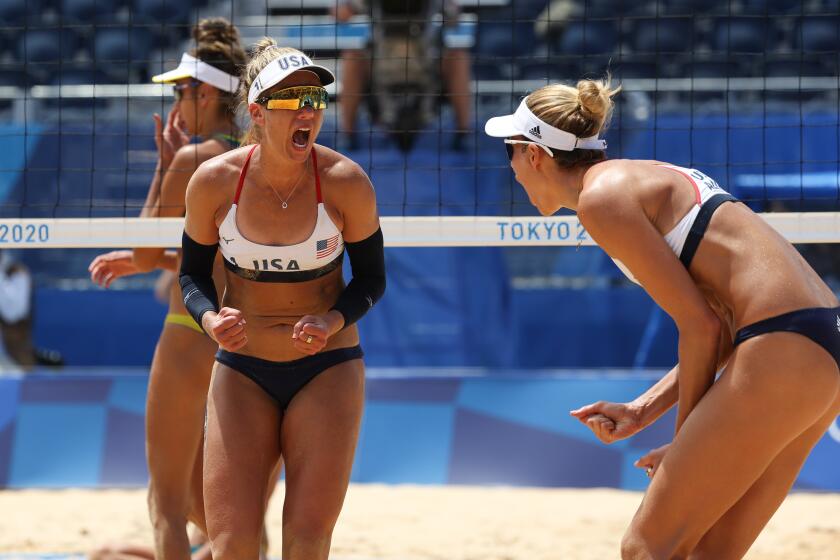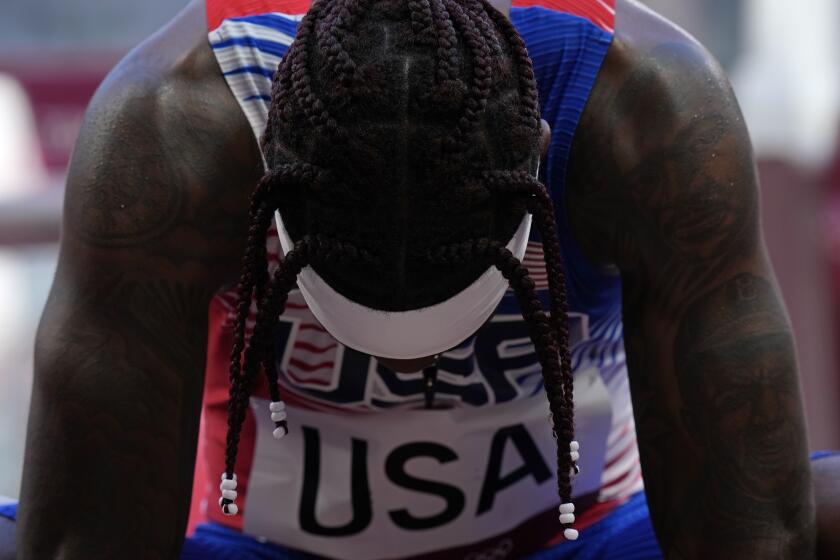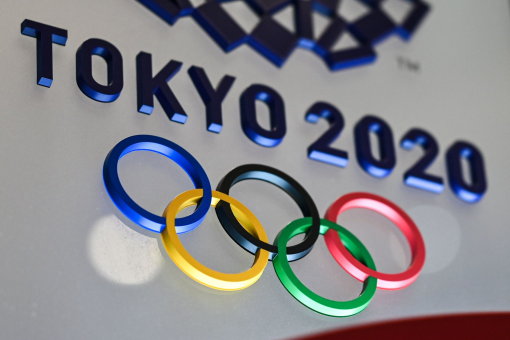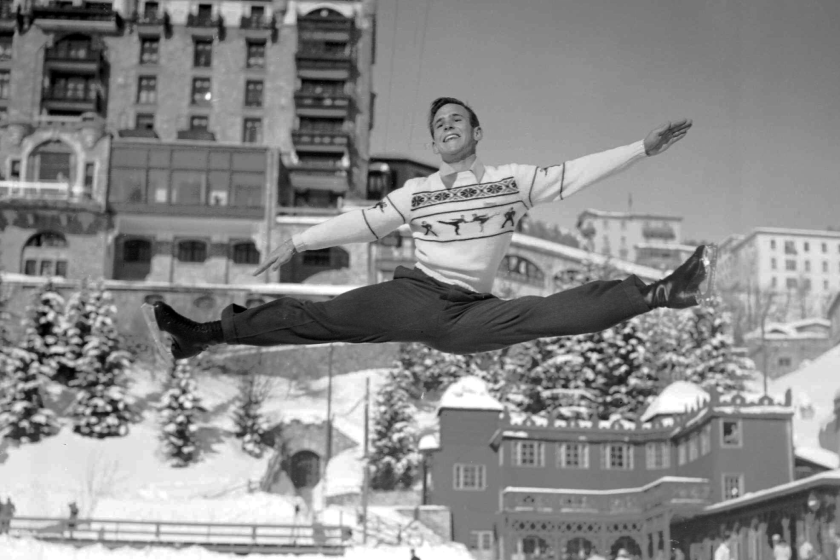Why Olympic divers, volleyball players and others are covered in body tape
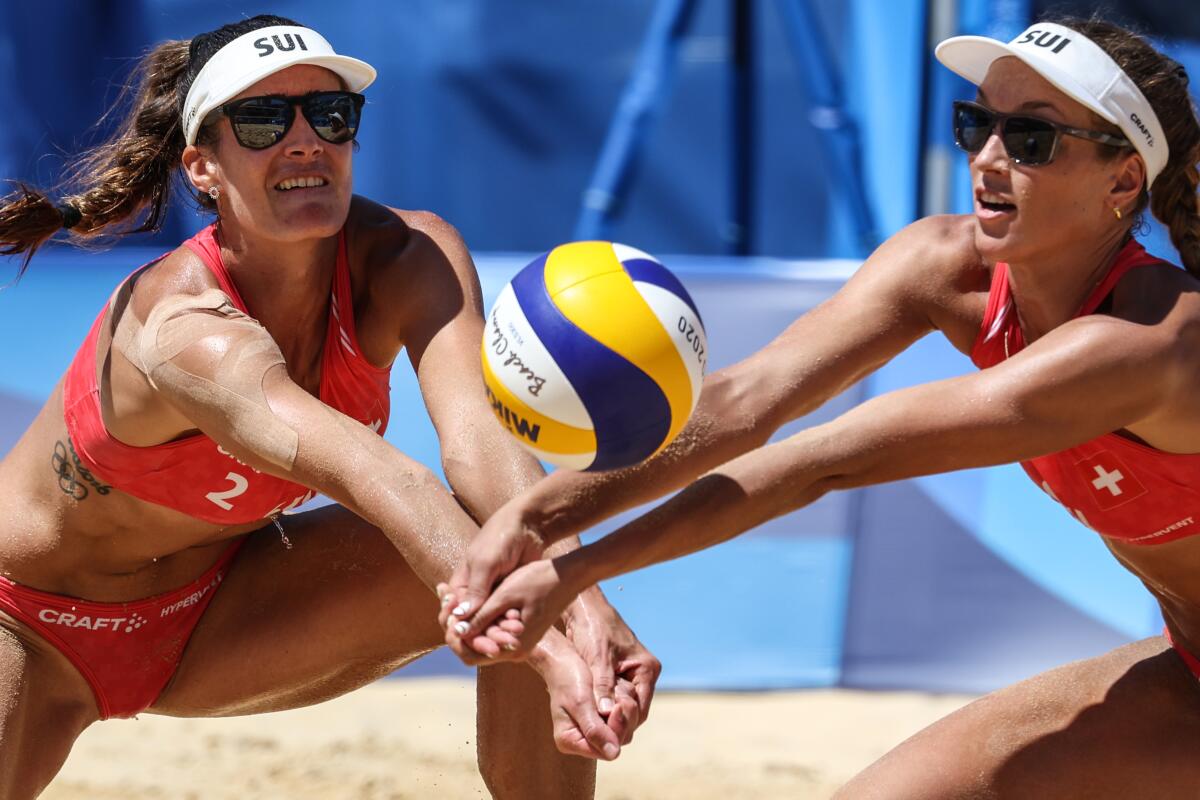
- Share via
TOKYO — The Tokyo Olympics have been largely held together by COVID face masks and tape. The first is required, the second optional.
But it’s an option many athletes have obviously chosen, because tape is everywhere. On the wrists of gymnasts and rock climbers. On the thighs and shoulders of sprinters, throwers and rugby players. One Chinese diver’s body was so covered in brown tape he looked like a mummy.
“Athletes wear it for different reasons,” said Sue Falsone, an athletic trainer for 25 years who has worked with the Dodgers and the men’s national soccer team. “While the science behind it doesn’t always support its use, the bottom line is athletes feel better wearing it. There is little downside to wearing it and if it helps them mentally or physically, then I am all for it.
“Athletes don’t use stuff that doesn’t work. So it must do something.”
April Ross and Alix Klineman won gold for the United States in beach volleyball, defeating Australia at the Tokyo Olympics on Friday.
There are different kinds of tape, from the stiff white athletic tape, made of cotton, which has been around forever, to the brightly colored elastic therapeutic tape, which is made of cotton, synthetic and adhesive. Commonly known as kinesiology tape, it was pioneered by Kenzo Kase, a Japanese chiropractor, in the 1970s. Both kinds serve multiple purposes.
“The white tape the rock climbers or divers wear at their wrist is typically worn for support,” said Falsone, who now runs Structure & Function Education, an Arizona-based company that provides education in athletic training, performance and physical rehabilitation. “They feel like it gives them some stability at vulnerable joints. While the science says that tape loosens after just a few minutes ... it gives the athlete a lot of mental support as well, knowing they have some extra support in the area.”
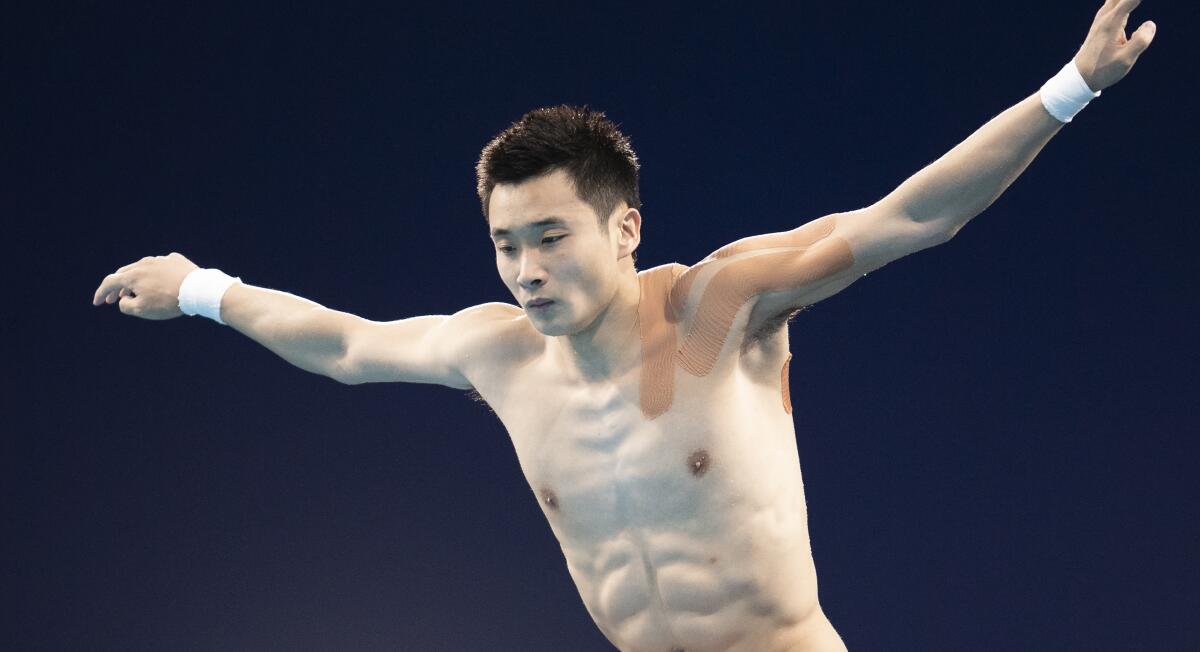
The stretchy, flexible therapeutic tape also has benefits in the areas of self-movement and body position. It provides sensory input to an injured or sensitive area as well. And because it’s elastic, it allows for a full range of motion, unlike traditional athletic tape.
“Some [athletes] will say if you put it on the muscle one way it can facilitate a muscle to make it work better,” Falsone said. “If you put it on the opposite way it can make the muscle relax. All of this has been debunked in the literature, but people have their theories and stick with it.
“What we do know is this tape is highly effective for pain control. Study after study shows this tape works well for that.”
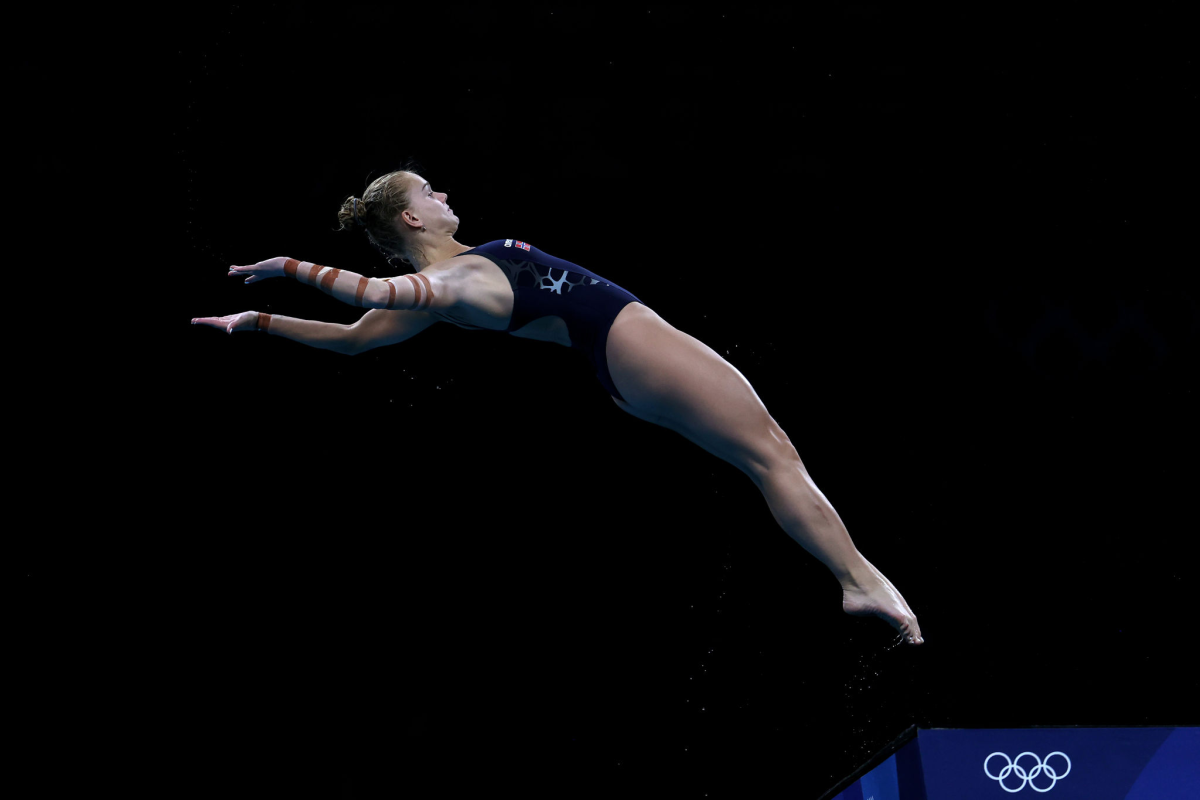
My experience is if it’s going to help an athlete, even if it’s a little bit of a placebo, I’m going to do it.
— Cesar Roldan, L.A. Galaxy team trainer
Former world-record-holder Dotsie Bausch was 40 when she won a silver medal in track cycling in the 2012 London Games. She said she used kinesiology tape not just for training and competition, but to relieve pain and tightness after long plane flights and to help with sciatica.
“I always had pain and since I always [trained] hard, I lived on ibuprofen,” said Bausch, founder and executive director of the nonprofit Switch4Good. Using the tape lessened her dependence on painkillers.
Galaxy trainer Cesar Roldan said elastic therapeutic tape has become ubiquitous in soccer. And it works best when athletes forget they’re wearing it.
“Your body never forgets that the tape’s on there. So it continuously sends signals to that muscle to keep it firing,” he said. “A lot of times we put tape on someone that’s coming back from a hamstring strain to facilitate that muscular activation, while they’re training or playing.”
Therapeutic tape can also enhance circulation and reduce swelling in joints.
The U.S. men’s 400-meter relay team fails to make finals. But in field events, Ryan Crouser wins the shot put, and Katie Nageotte wins in pole vault.
“There are little convolutions in the tape that help to lift the skin,” Falsone said. “So you have skin, a layer of fat and then muscle. In the fat, blood vessels are there. If we lift the skin, the circulation improves. This helps with decreasing swelling.”
In other cases, it’s little more than a placebo. But even that can improve performance, says Roldan.
“There isn’t a lot of definitive research over these things,” he said. “My experience is if it’s going to help an athlete, even if it’s a little bit of a placebo, I’m going to do it.”
Kase, who developed kinesiology tape, was looking for an alternative to stiff athletic tape, something that would mimic the elasticity of human skin. The first athletes to test Kase’s tape were Japanese sumo wrestlers, but he has also documented its effectiveness on dogs and horses and has even taped tree limbs, fruit, flamingos and fish.
Therapeutic tape didn’t really become mainstream until the 2008 Olympics, a popularity fueled in part by beach volleyball player Kerri Walsh, who won a gold medal with a complex spider-web pattern of tape, provided by Kase, on her surgically repaired right shoulder.
Intrigued by Walsh’s performance, entrepreneurs bought the rights to take elastic therapeutic out of the clinic and offer it directly to consumers, founding KT Tape, a Utah-based company.
“Every time there is an Olympics, we see a significant boost in consumer usage. And the visibility on athletes,” said Greg Venner, KT Tape’s president and CEO.
The company works with several national governing bodies in winter and summer Olympic disciplines and has provided custom-designed supplies to about 15 countries, including the U.S., Canada, Germany and Japan, printing their three-letter IOC abbreviation in the tape.
“These are people, athletes, who believe in our product, have used it before, and it is authentic usage with a broad extent of athletes at the Olympics,” Venner said. “That’s really not by chance.”
More to Read
Go beyond the scoreboard
Get the latest on L.A.'s teams in the daily Sports Report newsletter.
You may occasionally receive promotional content from the Los Angeles Times.

